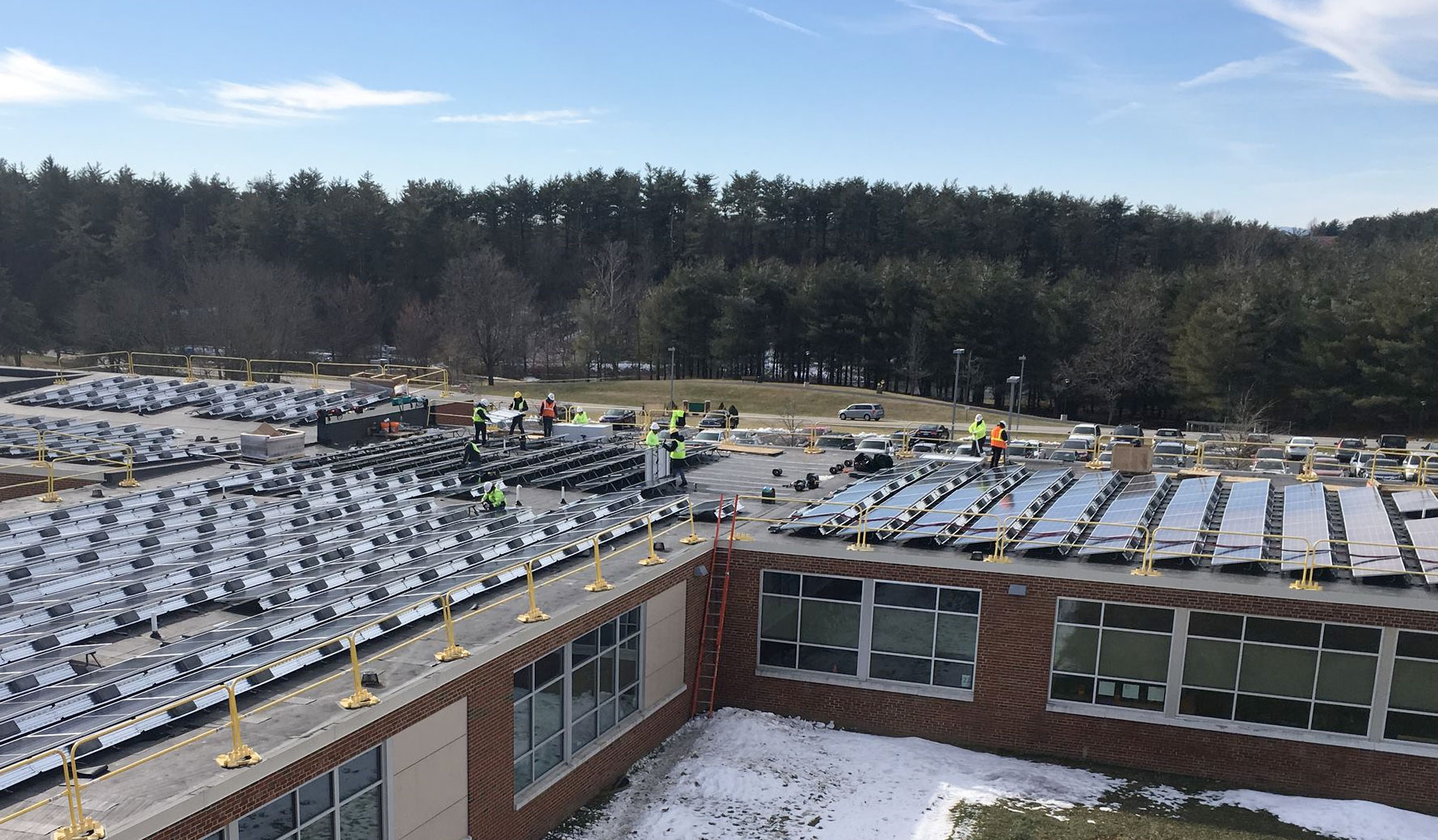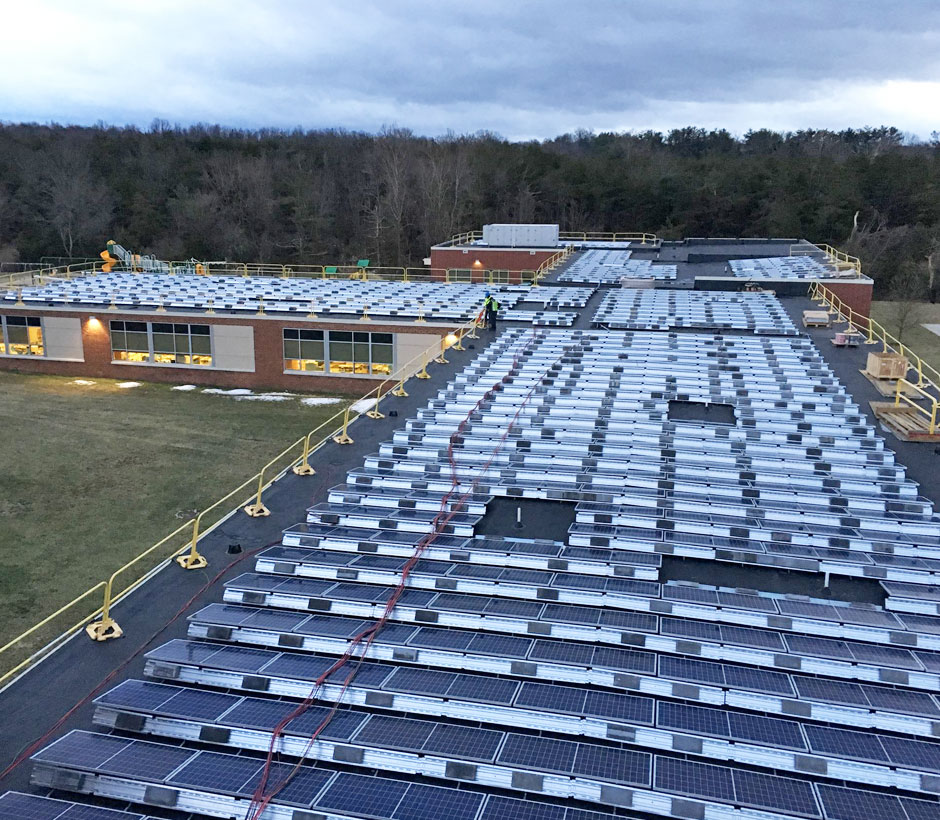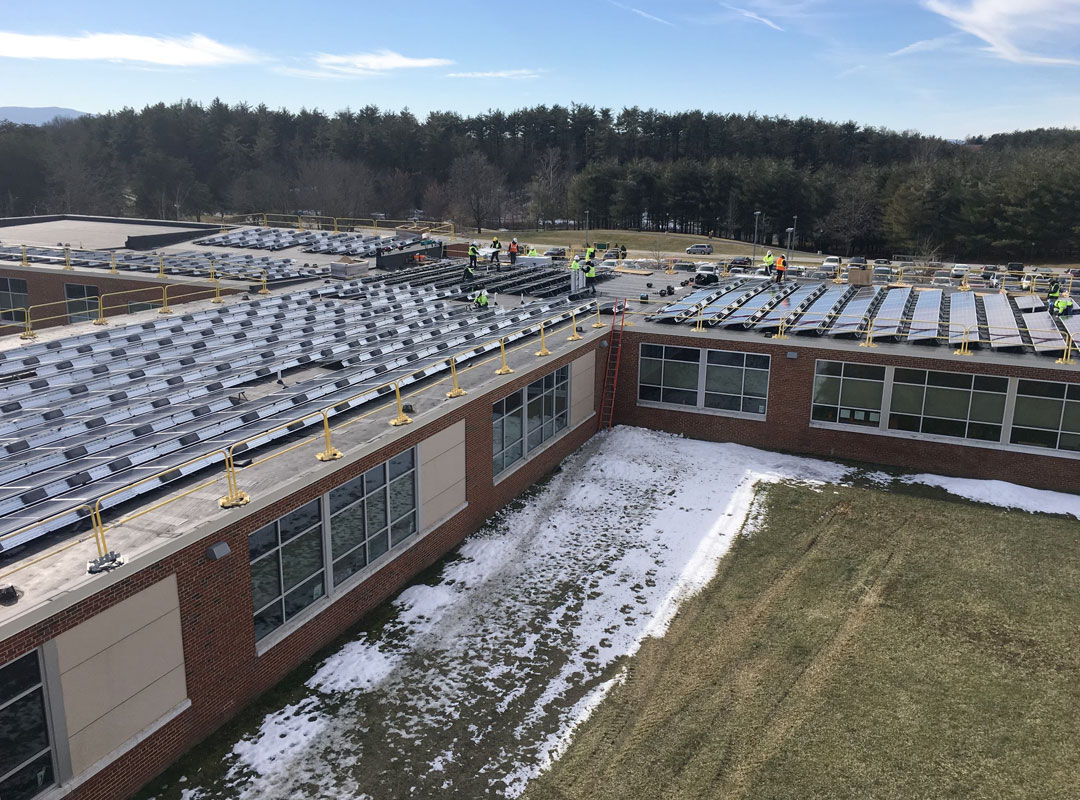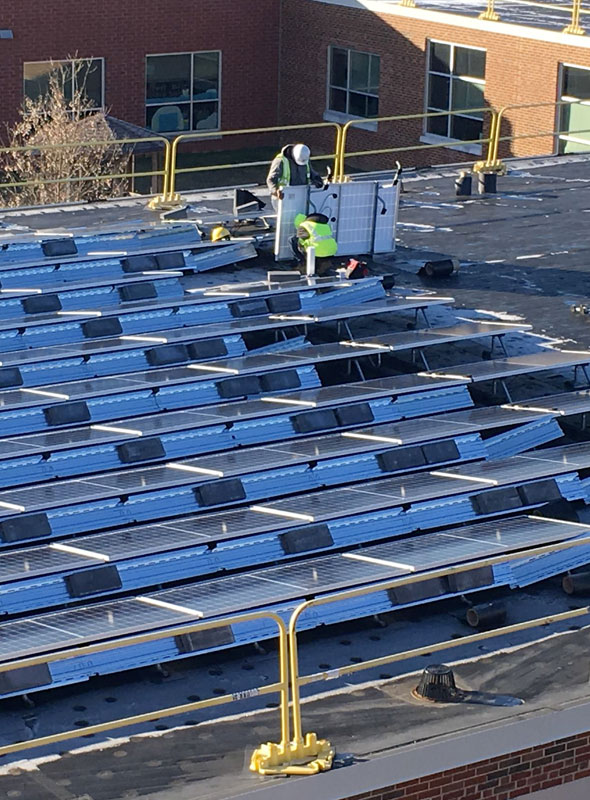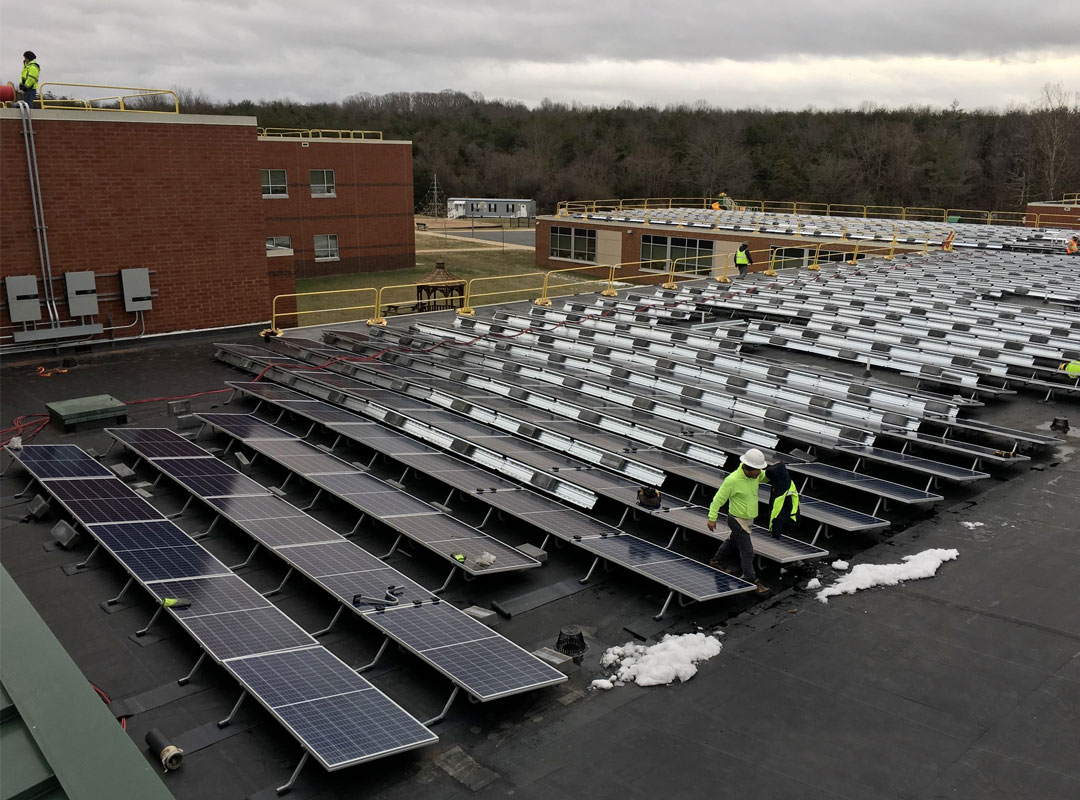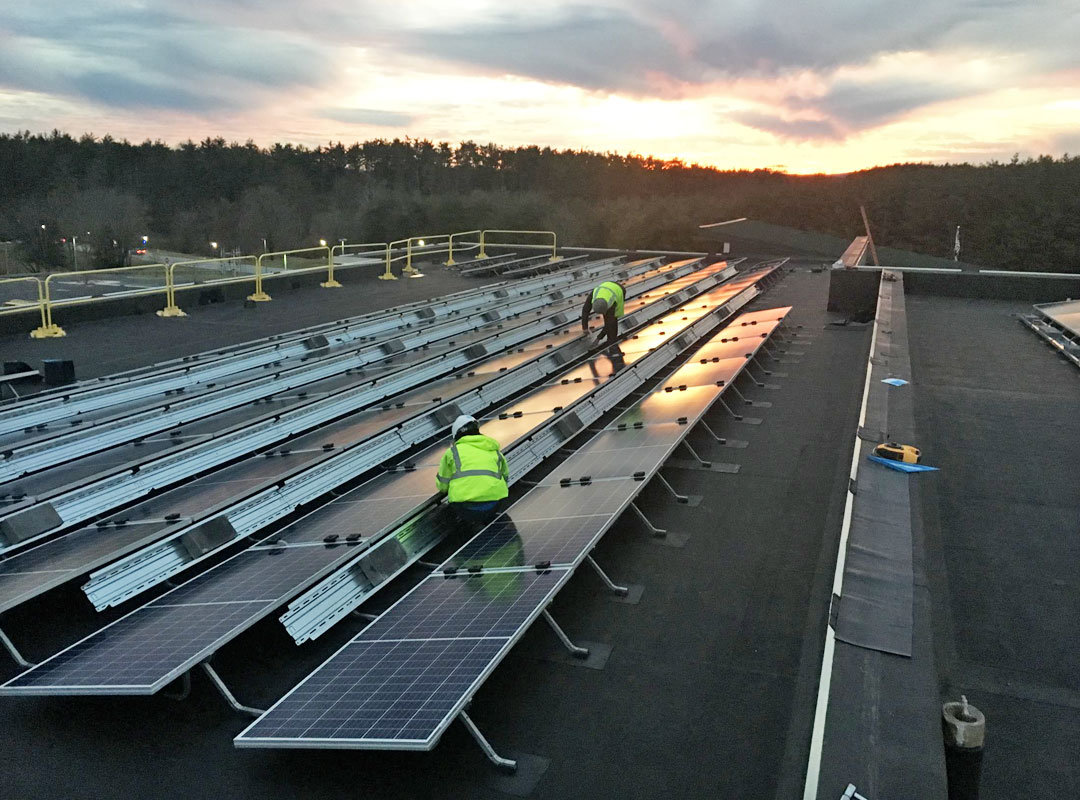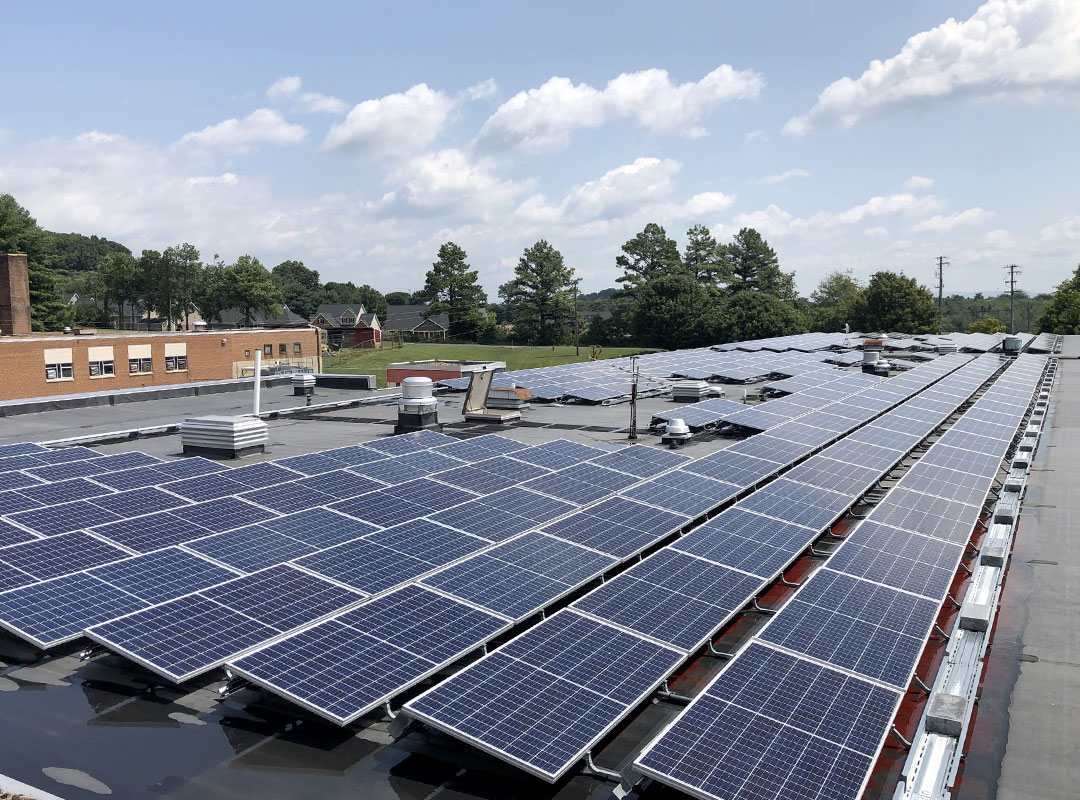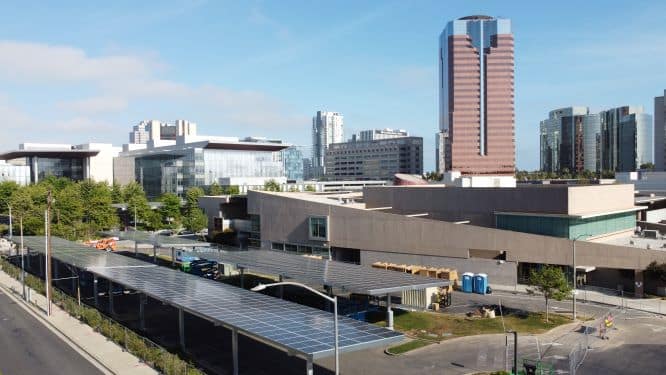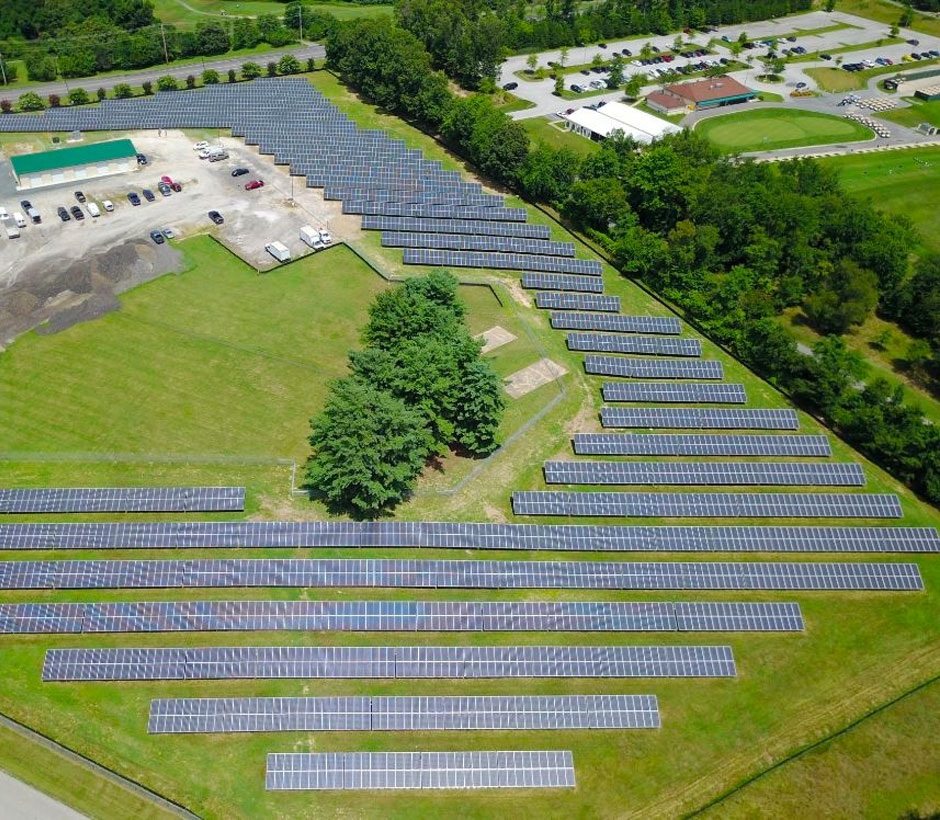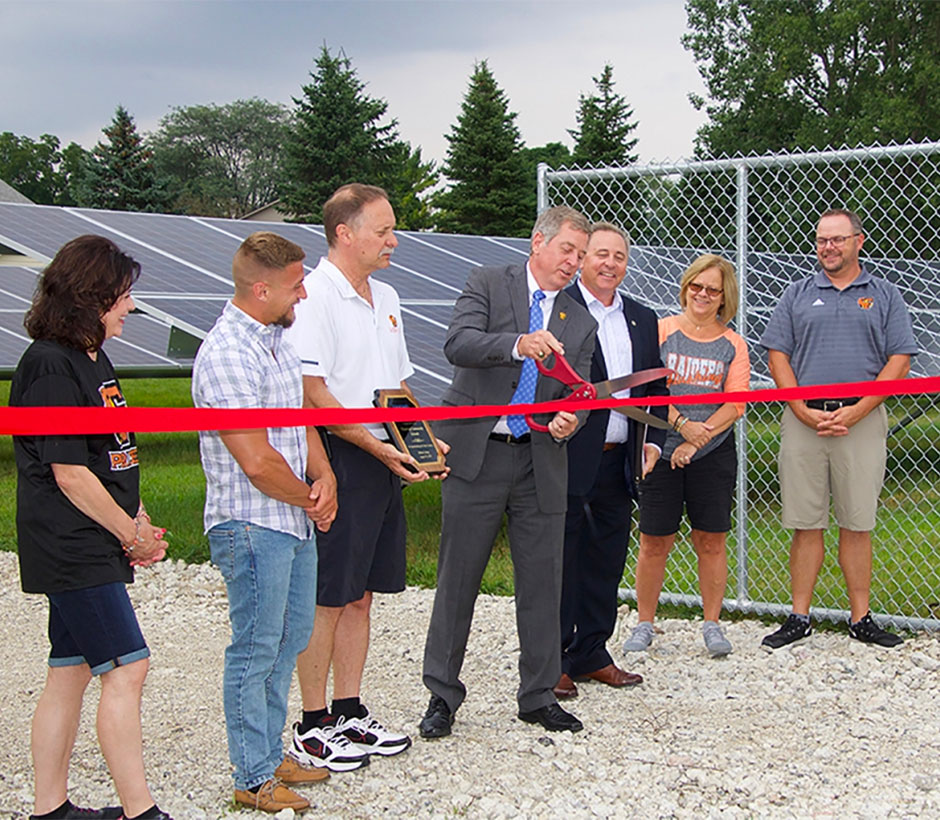On-Site Solar Inspired by Two Students
Solar arrays at four schools in Augusta County, Virginia, are now complete and operational, bringing additional renewable energy to western Virginia. The combined one-megawatt (MW) solar project on four schools in the Augusta County Public School (ACPS) system was originally spearheaded by two local high school students with funding from Standard Solar.
The arrays, on the rooftops of Riverheads Elementary School, Riverheads High School, Wilson Elementary School and Wilson Middle School, are now generating power as the result of a strong project collaboration between ACPS, Dominion Energy, Secure Futures and Standard Solar. The system generates an average of 30 percent of the energy used by the schools.
Funding for School Districts Who Want to Go Solar
Standard Solar funded the project and is responsible for long-term system operation and maintenance, further minimizing the school district’s costs. ACPS will save on their energy costs over the next 20 years by using solar energy, and the project didn’t require any up-front costs from the county. ACPS currently has 10,500 students enrolled in 18 schools.
“Standard Solar is proud to provide funding for school districts like ACPS, counties, and colleges and universities that have begun to utilize renewables but need to do so without utilizing capital budgets,” said John Finnerty, Standard Solar. “We also commend Virginia Governor Northam’s recent Executive Order directing a pathway to 100% carbon free power and positioning the commonwealth for continued economic and community growth.”
Learning Opportunities for the Next Generation
Secure Futures developed the project and provided the county with a curriculum about solar energy that matches up with the state’s Standards of Learning.
“With the largest solar power system at any school division in Virginia, Augusta County Schools are showing leadership that’s financial, environmental and educational,” said Anthony Smith, CEO of Secure Futures. “Using their own solar power, the schools will save nearly $500,000 over the next two decades, while making a positive contribution to Virginia’s clean energy mix and offering students hands-on learning opportunities in a 21st century industry.”

